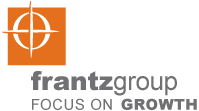
Today, are you the disruptor, or the entity being disrupted or both?
Well, we are all at least one of these.
Because, sooner or later, something fundamental in all our business worlds change.
And, as leaders we all face this, and our value as a leader is not judged by how we are being disrupted, it is being judged by how we lead our team’s successful response to the disruption.
The good news is, no matter which you are, the disruption preparation process is unique to you, but with similarities.
In the 30 years that Frantz Group has been assisting our customers’ leaders and ourselves through the disruption opportunities or threats we have faced, we have studied, experienced and evolved the fundamentals of disruption reaction planning. At a high level, we intend to share the core elements in this document.
You may ask, is disruption planning relevant today?
Our perspective is it always has been relevant and always will be.
Even back in 85 BC, Publilius told us “Anyone can hold the helm when the sea is calm.”.
In the modern business settings we live in, the sea is ever changing and anything but calm.

Why is Disruption dominating the executive current agenda?
BUSINESSES are under intensifying pressure. New approaches, enabled by exponential technologies and liberalizing public policies, are reducing barriers to entry on a global scale. New entrants can quickly scale businesses that once took incumbents decades to build. As a result, competition in many markets is increasing, and product life cycles are compressing. The environment is ripe for disruptive entrants wielding new approaches with the power to interrupt the best-laid plans, predictions, and forecasts and the potential to unseat corporate giants. This is the disruption we face.
A recent McKinsey study documents disruption is the top issue today facing CEO’s.

Deloitte enlightens us with their perception that there are at least nine patterns of disruption.

How does Frantz Group suggest we respond to a disruptive situation?
Do our homework urgently first so we have time to react.
Then, continuously monitor the changes in the environment to determine which could be truly disruptive.
Action Plan Elements:
· Understand what we have to leverage?
· Who are our existing customers?
· How many of them are there by segment?
· What and why are they buying from us?
· Which of them would be willing to pilot something new with us?
· Research and document our target industry business drivers.
· Investigate known competitors by Product Type and Target Industry Priority
· Research our known manufacturers if we are providing a hardware-software combination.
· Determine who they are targeting market wise and what their solution value is within that market.
· Who are they partnering with and why?
· Interview relevant innovative technology companies on target market choices and openness to partnering.
· Rank innovative technology priorities of markets for size, fit and competition for us.
· Independently debrief relevant business software companies on target markets they are chasing and why?
· Interview software company leaders or sales people on target markets and solution potential.
· Interview relevant services companies on target markets
· Rank our priorities of markets for size, fit and competition.
· Begin to form a product design that would defend against competition.
Suggested Next Steps:
We look forward to talking with you and moving you forward.
Reach out to me personally or take advantage of our website contact us form.
We welcome a 30 minute initial discussion of your situation.
Following that meeting, we would provide a go forward list of todos.
John Frantz
CEO of The Frantz Group
Our View of the TRUSTED ADVISER:
The trusted adviser seeks to increase a customer’s return on attention, helping the customer get more value per unit of attention than the customer could on her own by proactively and objectively recommending products, services, and opportunities that help the customer meet her goals. The trusted adviser sifts through possible options to be helpful to the customer before and after decisions are made.

